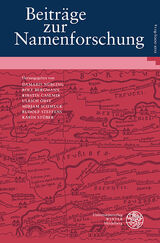Author: Thomas Stolz
- «
- 1
- »
The search returned 4 results.
Differentielle Namenkörperschonung. Beitrag
Zur Anlautmutation von Personen- und Ortsnamen im heutigen Walisischen (mit einem Ausblick auf seine keltischen Verwandten)
Colonial Place Names in a Comparative Perspective Beitrag
Einleitung: Namen und Kolonialismus Beitrag
- «
- 1
- »
